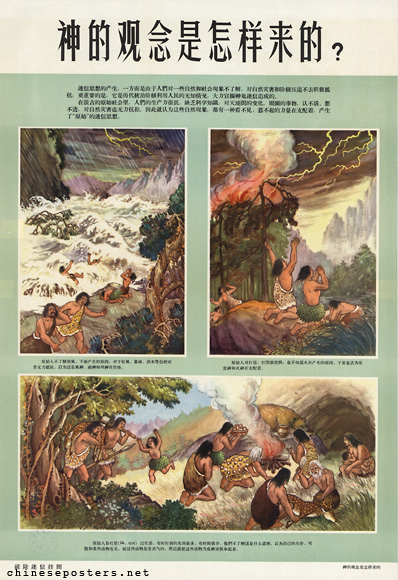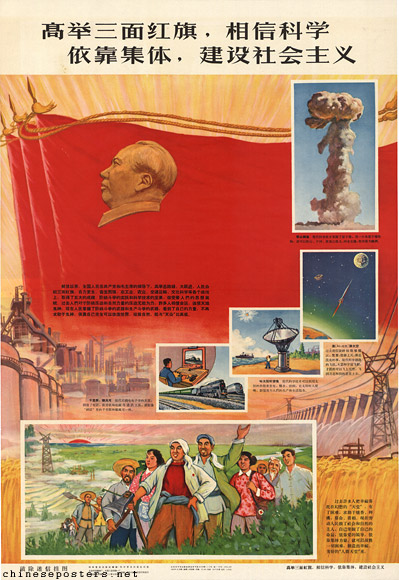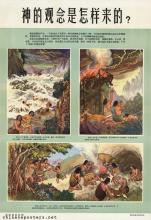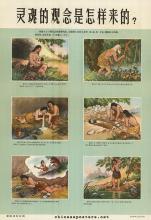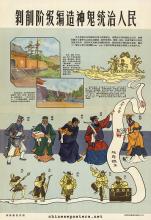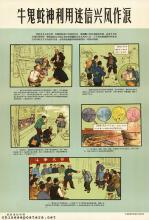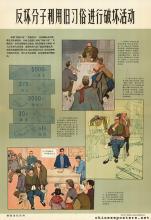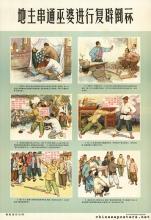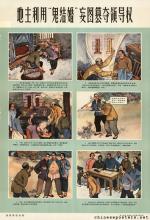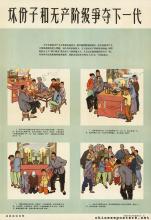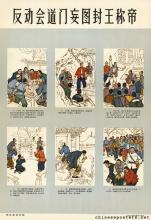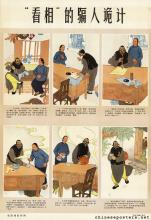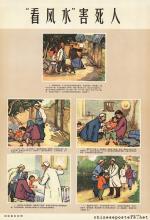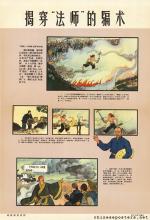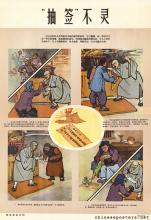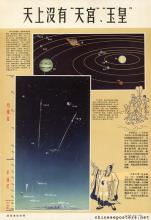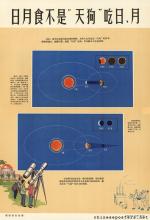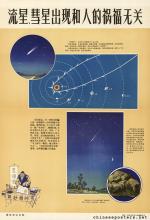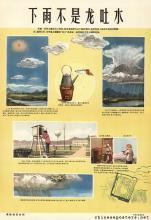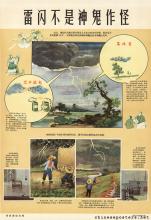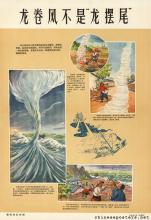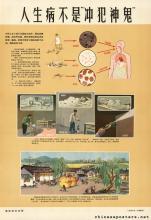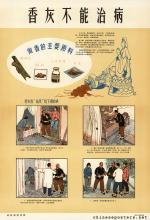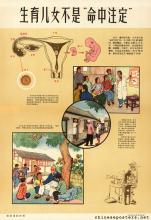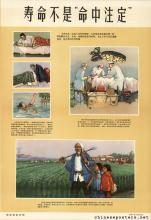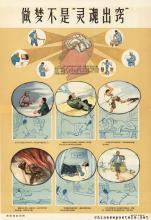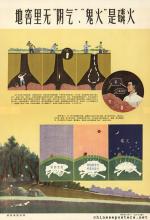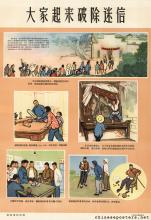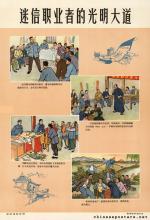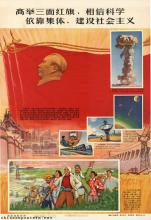Where does the concept of gods come from?, 1965
After the Great Leap Forward and the three years of hardship that followed, a sustained new effort was started to combat superstition in all its forms. This formed part of the Socialist Education Movement that was rolled out in 1963 and that aimed to bring cadre corruption to an end and intensify ideological education; in a sense, it was a prelude to the Cultural Revolution. It also echoed the ‘Three Revolutionary Movements’ (Three Red Banners) that Mao Zedong had identified in 1963, i.e., trust science, rely on the collective, establish socialism. From 1964 on, local exhibitions had been organized to eliminate superstition.
Raise high the three red banners, trust science, rely on the collective, establish socialism, 1965
In order to provide guidance for such exhibitions, in 1965 a 35-sheet poster series was published by the Science Popularization Publishing House that in itself could serve as an exhibition when displayed. The topics that were covered ranged from exposing fortune-tellers and feng-shui masters to explaining solar eclipses, the workings of the human brain and answering the question how babies were made. It ended reassuringly with a poster showing Mao and the endless possibilities science had for China.
Richard Baum and Frederick C. Teiwes, Ssu-Ch’ing: The Socialist Education Movement of 1962-1966 (China Research Monographs No. 2) (Berkeley: University of California, 1968)
Denise Y. Ho, Curating Revolution – Politics on Display in Mao’s China (Cambridge: Cambridge University Press, 2018)
Steve A. Smith, "Talking Toads and Chinless Ghosts: The Politics of 'Superstitious' Rumors in the People’s Republic of China, 1961–1965", American Historical Review (2006), 405-427
Steve A. Smith, "Local Cadres Confront the Supernatural: The Politics of Holy Water (Shenshui) in the PRC, 1949-1966", The China Quarterly (2006), 99-1022
